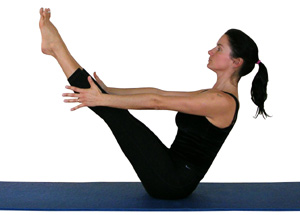
On the days that I work, I don’t usually get home until around 6.30pm. By then I’m starting to feel hungry so a dinner that’s going to be quick and easy to prepare always gets my vote – and especially so now that the evenings are colder and darker.
One of my go-to recipes for nights like this is a one-pan, stir-fry style dinner. It’s an amazingly, endlessly versatile recipe that makes use of whatever I’ve got – whether that’s fresh ingredients or something left over from a previous dinner. In fact – it is invariably a combination fresh and leftover ingredients.

My usual starting point is to get my frying pan out and on the hob. You could use a wok if you prefer. I then add a little oil to the pan – sunflower, olive, rapeseed or coconut and let this heat through. Coconut oil works particularly well with potatoes so if I’ve got leftover potatoes to use up, I’ll normally use coconut oil. The next ingredient to go in is usually some chopped or sliced onion and maybe some garlic. And from there – the ingredients will be whatever I’ve got to hand.
This could be leftover poultry, meat or fish, leftover grains – such as rice, quinoa, bulgar wheat, leftover cooked vegetables – carrots, green beans, potatoes, pre-cooked pulses such as lentils, chickpeas or beans.
In terms of fresh ingredients – it’s best to use things that will cook fairly quickly such as leeks, peppers, shredded leafy greens and so on. If you have root vegetables – these are best cut into very fine julienne strips or spiralised so that they cook in around the same time as the other ingredients. You can also use a vegetable peeler to make thin shavings of root vegetables. I would normally add these to the pan immediately after the onions to give them a little longer to cook.
As a general rule – add the ingredients that will take the longest to cook first and those that just require re-heating later. If you’re adding any green leaves that are a little more delicate, such as rocket, spinach or chard – these can be added towards the end so that they just wilt rather than being cooked to oblivion! Even if you only have a small quantity of something, it’s worth throwing in. And at least that way it doesn’t go to waste.
Add seasoning to the ingredients and gently stir everything to make sure that it all gets cooked evenly. It should be ready in about 10 or 15 minutes. Very often I sprinkle some seeds into the mixture a minute or two before it’s all cooked.
You can also add a couple of eggs to the recipe. When the other ingredients are almost cooked and don’t need to be stirred around any more, use a wooden spoon to create a space or two and tip the eggs into the space/s to cook. I find that adding a lid to my pan helps the eggs cook through more quickly.
I’d say I cook my dinner using a variation on this theme at least once every week – the possible combinations are pretty much endless. And it seems that it doesn’t really matter what I put into it – it always turns out tasting good.



If you missed my previous post about a quick and easy pasta recipe, here is a link to it. Hopefully you’ll find some inspiration in one or both of these posts for some quick, easy and healthy dinners!




















![20160522_123521[1]](https://confluentlife.wordpress.com/wp-content/uploads/2016/07/20160522_1235211.jpg?w=702)
![20160522_125715[1] Scrambled tofu on toast with mushrooms and chard](https://i0.wp.com/confluentlife.wordpress.com/wp-content/uploads/2016/07/20160522_1257151.jpg?w=347&h=260&ssl=1)
![20160522_124037[1] Hummous and avocado on toast](https://i0.wp.com/confluentlife.wordpress.com/wp-content/uploads/2016/07/20160522_1240371.jpg?w=347&h=260&ssl=1)
![20160624_185830[1]](https://confluentlife.wordpress.com/wp-content/uploads/2016/07/20160624_1858301.jpg?w=572&h=763)
![20160624_194942[1] 20160624_194942[1]](https://i0.wp.com/confluentlife.wordpress.com/wp-content/uploads/2016/07/20160624_1949421.jpg?w=438&h=584&ssl=1)
![20160624_195000[1] Our lovely chef for the evening Xandra](https://i0.wp.com/confluentlife.wordpress.com/wp-content/uploads/2016/07/20160624_1950001.jpg?w=256&h=192&ssl=1)
![20160624_201733[1] 20160624_201733[1]](https://i0.wp.com/confluentlife.wordpress.com/wp-content/uploads/2016/07/20160624_2017331.jpg?w=256&h=192&ssl=1)
![20160624_202429[1] 20160624_202429[1]](https://i0.wp.com/confluentlife.wordpress.com/wp-content/uploads/2016/07/20160624_2024291.jpg?w=256&h=192&ssl=1)





![20160416_164402[1]](https://confluentlife.wordpress.com/wp-content/uploads/2016/04/20160416_1644021.jpg?w=702)
![20160416_185131[1] 20160416_185131[1]](https://i0.wp.com/confluentlife.wordpress.com/wp-content/uploads/2016/04/20160416_18513111.jpg?w=347&h=463&ssl=1)
![20160416_185503[1] 20160416_185503[1]](https://i0.wp.com/confluentlife.wordpress.com/wp-content/uploads/2016/04/20160416_18550311.jpg?w=347&h=463&ssl=1)




![20160328_175544[1] 20160328_175544[1]](https://i0.wp.com/confluentlife.wordpress.com/wp-content/uploads/2016/04/20160328_1755441.jpg?w=347&h=463&ssl=1)
![20160328_175624[1] 20160328_175624[1]](https://i0.wp.com/confluentlife.wordpress.com/wp-content/uploads/2016/04/20160328_1756241.jpg?w=347&h=463&ssl=1)
![20160403_132340[1]](https://confluentlife.wordpress.com/wp-content/uploads/2016/04/20160403_1323401.jpg?w=702)